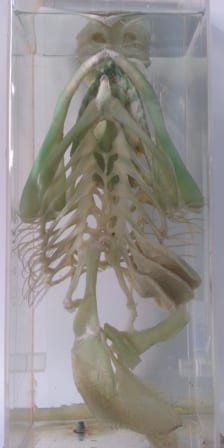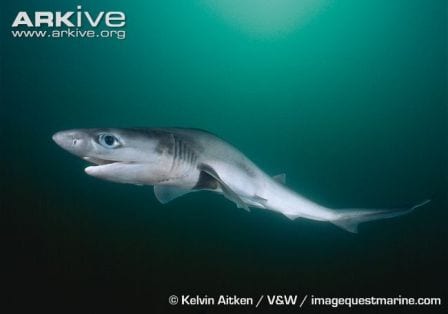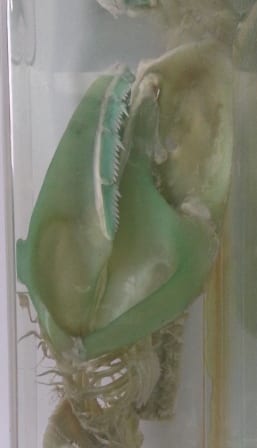Specimen of the Week: Week Ninety-Seven
By Emma-Louise Nicholls, on 19 August 2013
 Three blogs away from the big 1-0-0! In the run up to the 100th blog I am going to bring to you the top ten specimens at the Grant Museum, as voted for by…. me. I have employed strict criteria with which to segregate the top ten from the other 67,990 specimens that we have in our care…
Three blogs away from the big 1-0-0! In the run up to the 100th blog I am going to bring to you the top ten specimens at the Grant Museum, as voted for by…. me. I have employed strict criteria with which to segregate the top ten from the other 67,990 specimens that we have in our care…
1) It must not be on permanent display, giving you a little behind-the-scenes magic, if you will, as the specimen will then go on display for the week of which it has been named ‘Specimen’. Oh yes. That’s almost as good as our exhibition It Came From The Stores. Almost.
2) It must have at some point in the past made me say ‘woooo’ out loud (given my childlike disposition for expressing wonderment at the world at large, this is not necessarily a hard qualification for the specimen to achieve)
3) I must know (at least in a vague sort of a way) what species the specimen is, as SotW is researched and written within a strict one hour time frame.
With that in mind, at Number Four, this week’s Specimen of the Week is…
**The green sharpnose sevengill shark skull**
1) I don’t mean there is a species called the green sharpnose sevengill shark. I mean we have a sharpnose sevengill shark, that is green. You have to be careful with green, it is a difficult colour to wear, but our shark is a beautiful mint colour, the brightness of which varies across the specimen. In reality, the cartilaginous skeleton (sharks have no bones at all) is not this lovely shade of verdigris-green, but (when properly de-fleshed) an ivory-white colour. However, in life the large florescent eyes of this beautiful animal are green as you will see when you get to the lovely image below. The green tinge on our specimen is unusual and is thought to have been caused by the preserving fluid. The teeth are amazing (see image right). Each one of the four ‘blocks’ that look like small combs that you can see in the lower jaw, is a single tooth.

The seven gill arches are clearly
visible, along with three actual
gills still present on the right of
the image
2) The ‘sharp’ nose gives it the distinctive torpedo-shape. Whilst it will presumably come as no surprise to you to read that this species has seven gills, it may be interesting (no wait, it IS interesting) that out of the approximately 454 known species of modern shark, they ALL have 5 gill slits on either side, except for just six of them. So this is a very special shark we have here. All of the six and seven gilled sharks belong together in the Order called Hexanchiformes, which includes the crazy looking frilled shark.
3) Many deep water species of shark have a varied diet, primarily because the nutrient levels all the way down there leave the lunch menu a little wanting. The sharpnose sevengill is no different and will predate on most things it comes across in the dark, such as cuttlefish, fish, lobsters, rays, other sharks, shrimp and squid. Unfortunately, it is also prey itself, primarily to larger sharks.

A, sadly, expired sharpnise sevengill
shark. (Image taken by K.V.
Akhilesh. Image obtained from
www.commons.wikimedia.org)
4) The sharpnose sevengill shark does not lays eggs like some other shark species. Instead, the eggs develop internally and hatch inside the female’s body. This method of reproduction is called ovoviviparity. Between 9 and 20 pups of approximately 25 centimetres in length are born at a time and breeding takes place throughout the year.

A sleek looking sharpnose sevengill shark.
(Image taken by Kelvin Aitken/V&W/imagequestmarine.com.
Image taken from www.arkive.org).jpg
5) This species of shark is not shy of a little meandering and subsequently its global range is vast. It inhabits both tropical and temperate water across the world (it is not a fan of the UK though sadly), living between 27 and 720 metres below the surface. Whilst it gets around, the sharpnose sevengill shark is not a common species and is rarely seen. Although not currently thought to be endangered, deep water trawling is having a negative impact on population sizes. From a biological point of view deep water trawling in fact has a negative impact on… well… everything.
Emma-Louise Nicholls is the Museum Assistant at the Grant Museum of Zoology
 Close
Close


